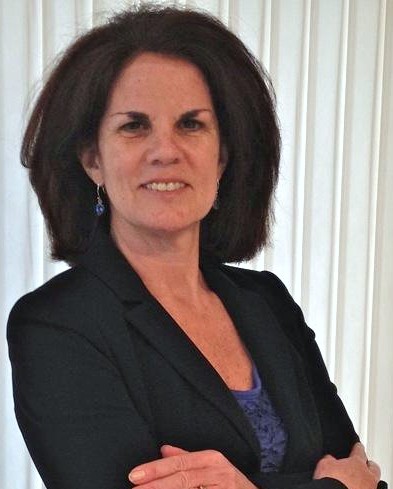Entries in patient centered medical home (3)
Leveraging Technology to Engage Consumers in Shared Decision Making
 September 10, 2012
September 10, 2012  Technology plays a vital role in Shared Decision Making. Join me as I lead this dynamic panel session and learn how you can leverage tools for improved patient centered decisions.
Technology plays a vital role in Shared Decision Making. Join me as I lead this dynamic panel session and learn how you can leverage tools for improved patient centered decisions.
- Piloting and evaluating SDM tools in the Patient Centered Medical Home to drive physician- patient collaboration for better outcomes
- Leveraging a mobile decision support tool to effectively educate consumers and enable them to evaluate their care options anywhere, anytime
- Discovering and defining a Shared Decision Making opportunity to empower and engage seniors and their families
Moderator:
Sherri Dorfman, MBA
CEO, Consumer eHealth Engagement Specialist, Stepping Stone Partners
Panelists:
> Kyra Bobinet, MD, MPH, Head of Senior Care Solutions, Aetna Emerging Business Group
> David C. Judge, MD, Medical Director, Ambulatory Practice of the Future, Massachusetts General Hospital
> Zev Lavon, MBA, PhD, Director, Enterprise Solution Architecture, CareFirst BlueCross BlueShield
Join me and my panelists at the World Congress Shared Decision Making Conference.
Evolving Web Based and Mobile Tools to Engage Consumers in the Shared Decision Making Process
 September 6, 2011
September 6, 2011

World Congress Leadership Summit on Shared Decision Making
September 23, 2011
Panel Session:
Moderator:
Sherri Dorfman, MBA, Chief Executive Officer, Stepping Stone Partners
Panelists:
- Mark L. Robitaille, MBA, Head of Care Management Support & Engagement, Aetna
- Changrong Ji, Senior Solutions Architect, CareFirst BCBS (Mobile strategy)
- Zev Lavon, PHD, Director Solution Architecture, CareFirst BCBS (Web strategy)
- James J. Mis, MBA, Communications Manager, Health Care Services, Independent Health
 care collaboration,
care collaboration,  mobile health and wellness texting,
mobile health and wellness texting,  online health and wellness coaching,
online health and wellness coaching,  patient centered medical home,
patient centered medical home,  personalization for health and wellness in
personalization for health and wellness in  Decision Support eHealth,
Decision Support eHealth,  Mobile Engagement Health & Wellness,
Mobile Engagement Health & Wellness,  Patient Decision Support,
Patient Decision Support,  Personalization eHealth,
Personalization eHealth,  shared decision making ehealth
shared decision making ehealth Ready for the Silver Tsunami?
 September 29, 2010
September 29, 2010  Last week, I attended Mass Technology Leadership Council’s event on the Emerging Technologies for the Silver Tsunami: Aging in Place through the use of Integrated Technology. The room was packed with interested stakeholders from HIT technology companies, hospitals, home health agencies and senior living communities.
Last week, I attended Mass Technology Leadership Council’s event on the Emerging Technologies for the Silver Tsunami: Aging in Place through the use of Integrated Technology. The room was packed with interested stakeholders from HIT technology companies, hospitals, home health agencies and senior living communities.
This is one of several events across the country focused on opportunities that will be brought in with the new waves of seniors.
Beginning in 2011, the oldest of the 78 million baby boomers will turn 65 years old. According to the Stanford Center on Longevity, the "number of older people (age 65 and over) will double over the next 30 years, from 40 million to 80 million, and the percentage of older people in the population will increase from 13% to 20%".
Given the size of this new segment of seniors, their education, affluence and comfort with technology, they will have a powerful impact on healthcare delivery, health plans and aging services.
Riding the Waves:
Leveraging my extensive consulting experience and knowledge about elder care technologies, I have defined five requirements for HIT solutions to meet the needs of seniors, families, caregivers and the care team.
1. Extending Solutions for Care Management
“I want my mom’s doctor to know what is really happening when she is away from his office”.
Through acquisition and partnerships, companies are combining their “point solutions” to bring new capabilities to seniors and their care circle. HIT suppliers are also proactively seeking ways to tie their solutions into the EMR and Health Information Exchange to bring needed insight to the clinician and support the medical home care team.
2. Expanding Solutions across the Care Continuum
“I do not want to have to purchase, learn and manage all different technologies as my father ages.”
There is an opportunity for health information technology firms to design their solutions with a set of capabilities that can be turned on as the senior requires the support. Considering the burden of the adult children and caregivers, the solution for this market will meet the needs of seniors across the care continuum; preventative, acute, chronic and long-term.
3. Guiding Care Decisions
“We are all taking turns caring for my father and we are exhausted since his health is deteriorating each day.”
Most of us have access to calendars and communication technologies which we can use for personal reasons. The problem is that we do not know what to expect each day and find ourselves reacting instead of planning for the care of our loved one. When we have a few minutes, we call our friend who just went through this with her mom. Think about how social networking can be leveraged to help families anticipate, plan and make the best decisions with the guidance of experts and other experienced caregivers.
4. Supporting Service Delivery
“I need to know what our caregivers are observing and be alerted when mom needs additional care.”
Whether they are busy raising their own families or living in another state, adult children struggle to care for their elder loved ones. Professional caregivers including home health workers can use technology to record observations of daily living and engage in shared decision making with the family.
5. Supporting Self -Management
“My dad needs to be able to manage this diabetes on a daily basis”.
With the shortage of health care professionals, older consumers need to take care of their chronic conditions and understand how to make changes when they run into many different situations common to their condition. Technology can serve as an enabler by reminding the senior to take medications and perform certain behaviors, tracking these activities, educating them what to do when these activities are missed, monitoring their vitals and alerting caregivers when problems arise.
Getting Ready for the Silver Tsunami:
As you define/refine your own product strategy for the senior market, think carefully about the steps you will take. The senior market is made up of many different “sub-segments". It is important to identify and understand how these sub-segments differ in their needs, behaviors, technology usage and preferences. This research will provide the insight to guide your product development to meet the requirements of your target audience(s).
How can you prepare for the Silver Tsunami? Learn more.


